When Eric Boullier joined McLaren from Lotus in January, he knew he had a major task on his hands helping to restore the team to thei former status as perennial championship challengers. The Woking squad started the season with a bang with a double podium finish in Australia, but even though they’ve failed to reach those heights since, Boullier, McLaren’s racing director, insists significant progress is being made…
Q: Eric, not so long ago McLaren Group CEO Ron Dennis said that he wants to show the team again where ‘true north’ is. But looking at the situation right now, his compass seems to be a bit inaccurate. How difficult is it to find true north?
Eric Boullier: Ha, no inaccuracy at all! We all know where ‘true north’ is. It is just that the starting point that we had in January or February - basically the winter testing - makes it a bit difficult to move fast enough towards that ‘true north’ direction. It is very difficult to recover to McLaren-style competitiveness in the short term - in the medium and long term, of course. So yes, we do know where true north is, definitely. But probably there is much more to be changed than expected.
Q: At the first race in Australia - with Kevin Magnussen on the podium - true north didn’t seem to be an issue. But it started to become one at the races that followed…
EB: We already knew from winter testing - with Mercedes ahead by one or 1.5 seconds - that we were not competitive enough. Over the first five races all the competitors - with their whole package - got back to the place they were in the winter tests. We are at that place now, which is maybe the fourth or fifth fastest team, depending on the track. That is the reality. Nevertheless we know where we have to go - but you cannot recover in two, three, four or five months. Look at a team like Red Bull Racing - or Mercedes. Red Bull took over Jaguar Racing and it took them five years until they started to win. Mercedes took over a world champion team and it took them three to four years to recover. So it would be foolish to think a recovery were possible within months. We also will need time. I would not say three to four years, but some time definitely.
Q: What’s the biggest difference between Lotus and McLaren, now that you’ve tasted it for a few months? Is it that the ‘bigger beast’ is harder to tame?
EB: It is (laughs). I did not have to change my mode of working, but I had to adapt. You have to accept part of the existing protocol. You have to accept that there are more people so some processes are a bit ‘heavier’, but the capacity of the team is also much, much higher. Probably - as Ron has put it - the team focused for too long too much on engineering and not enough on racing. We lost some flexibility and reaction time. If you don’t start the season in the right range you’re always one step behind - and catching up is never easy in a competitive environment.
Q: How much faster can McLaren react to issues than Lotus?
EB: To compare is not fair. They are two completely different companies. Think of this: when you have that positive momentum - you are in the right profile of company and have designed a car which is suiting the regulations - it is always easier, as you can be more flexible and it is easier to correct things. The further you are from the truth - not the true north - the more difficult it is. As Ron said, we now shift the target of the company to ‘true north’, but we need time to regroup everybody, and at the same time we have to be humble. I tell all at McLaren that, yes, we are a super team - one of the most successful teams in F1 history - but we are not today. We should also look at others and analyse why they are successful - and look at ourselves asking if we do everything necessary. This is the process we are in now.
Q: Is there a bit of a disappointment that the development curve is not steeper?
EB: It is not disappointing - it is frustrating. But to correct this, true the development curve at the beginning was not steep enough, but for some time we have been on a pretty steep one. Bringing the performance from the wind tunnel to the track, you need some weeks to do that as it takes time to manufacture the parts.
Q: How much are McLaren in the 2013 dilemma all over again? Having to race a season whilst working simultaneously on implementing a new power unit - and being the only team having to do so?
EB: We will have to think outside of the box! (laughs) Firstly, we as a team have to make sure that we are back where we should be: with a different racing attitude and with the flexibility. It is true we have our current programme but are also working parallel on next year’s car. The difference is we will keep pushing this year’s car as we want this car to be the reference for next year’s car. We have to be - let’s put it this way - a bit more strategic and conservative and not get lost again and use the opportunity as a team to make sure we are back where we should be with the new power unit. That is my main target. I don’t want to use another year. Of course it is not easy to live 2013 all over again - but we will not buckle!
Q: How many changes will you have to make to the car to implement the new unit? Are you working on a whole new car?
EB: It will be a completely new car. We’ve already been through the pain from last year to this year, so 50 percent is already done. At least we are prepared for the pain.
Q: After an excellent start Kevin Magnussen seems to have been fallen into a sort of rookie hole. Formula One reality seems to have hit him…
EB: The last two races have been good. In Monaco he could have been sixth easily - he had a brilliant start. But I also know that if we give him the right car he will do it again. Today we have a car that is probably capable of finishing between P6 and P9 - and if he can fulfil that target, that is good enough. We are not happy with that, but that is what we have. Yes, he had a bit of struggle after Australia, but you might expect that as it is part of the learning process. Since Barcelona his connection with his engineers is really good. Every time he does a set-up change it is going in the right direction. He is improving every single day.
Q: Being the third-best Mercedes-powered team - that cannot possibly be a satisfying situation. Where are the areas you have to improve to move ahead? It cannot be the power unit…
EB: It is mainly aerodynamics. This is where we are suffering the most. Our car is missing downforce and that would help to put us in the working window of the tyres.
Q: The Mercedes team are 140 points ahead of second-placed Red Bull and almost 200 points ahead of McLaren. Is the championship decided and we can all go home, or will all the other top teams finally get their act together?
EB: We definitely will not go home! (laughs) What has Mercedes done better to be in that position? Everything. They’ve built their team for three of four years now. To be successful you have to build all the elements together into one whole body. And of course they’ve built the best engine. They recruited massively some years ago, but for some time their team has been stable - and that helps. As we say in France, put all the stars together and align them - then bang! The car has good downforce, they have good drivers, the engine is good, the team is excellent - they are good everywhere.
Q: So it was a huge asset that they’ve developed engine and car together?
EB: Yes, of course. Ferrari did the same - but they weren’t ready. But one key factor is also stability. If you don’t have stability over some years with a clear project - following the ‘true north’ - you can’t expect anything in two months, not even in two years. You need time to build, fine tune and make sure you don’t leave any rocks unturned so that on the day you have to be ready you are ready. If you look at Red Bull, basically the Red Bull car is a really good car - the continuity of previous years - but their problem is that they are not a works team with the engine as Mercedes is. Same for McLaren. Mercedes has built an engine that suits the chassis - and vice versa.
Q: We’re effectively one third of the way through the season. What outlook do you have for the next six races?
EB: Well, Austria is a new track that we all don’t know, so it will be interesting to race on that. Silverstone will be interesting as we will bring a major upgrade. So let’s see where it will put us. We don’t expect to win races - but let’s see how far we can push the machine.
Q: Why are McLaren banking so much on simulator work?
EB: The more restrictions you have - testing is limited, wind tunnel usage is restricted - the more you have to push on something else. Red Bull is doing a lot of simulator work - Ferrari as well. We still have to improve in that field. This is an existential tool. Simulation, of course, will never be reality - this is why we have already changed the way we work on a race weekend. We use the Friday morning as a testing session, as Red Bull do. Simulation has to be part of the process as you can try more things than in reality, but you also have to correlate so as not to get lost. I trust the wind tunnel more than simulation - and I trust track running more than anything else. So on Fridays we put the right level of sensors on the car to correlate the work to know where we are - and where to go.
Q: What would make your first year at McLaren a success?
EB: My target is to bring this team back as a dominant team. It will take time. I want this team to think like a racing team, to be flexible and to put itself - as a team - on the right path. When Ron and I say 'this is true north', then it is my job to make sure that they all move in that direction.
Next Up
Related Articles
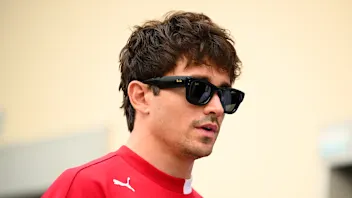 Leclerc calls Ferrari’s focus shift to 2026 a ‘no-brainer’
Leclerc calls Ferrari’s focus shift to 2026 a ‘no-brainer’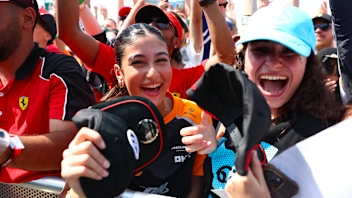 Formula 1’s record-breaking 2025 season in numbers
Formula 1’s record-breaking 2025 season in numbers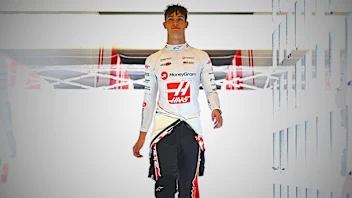 ExclusiveHow Bearman went from super-sub to star rookie in 2025
ExclusiveHow Bearman went from super-sub to star rookie in 2025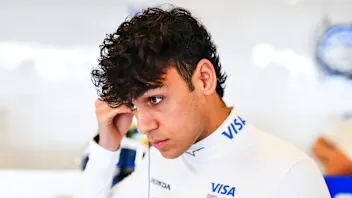 Marko ‘believed in me when others didn’t’ – Lindblad
Marko ‘believed in me when others didn’t’ – Lindblad.webp) End Of Year Reports 2025Alpine’s best and worst moments from 2025
End Of Year Reports 2025Alpine’s best and worst moments from 2025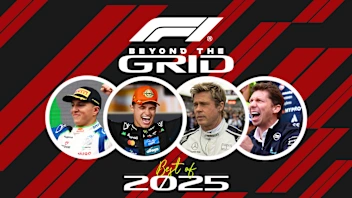 Beyond The GridThe best of 2025, from Norris’ evolution to Brad Pitt’s ‘need for speed’
Beyond The GridThe best of 2025, from Norris’ evolution to Brad Pitt’s ‘need for speed’